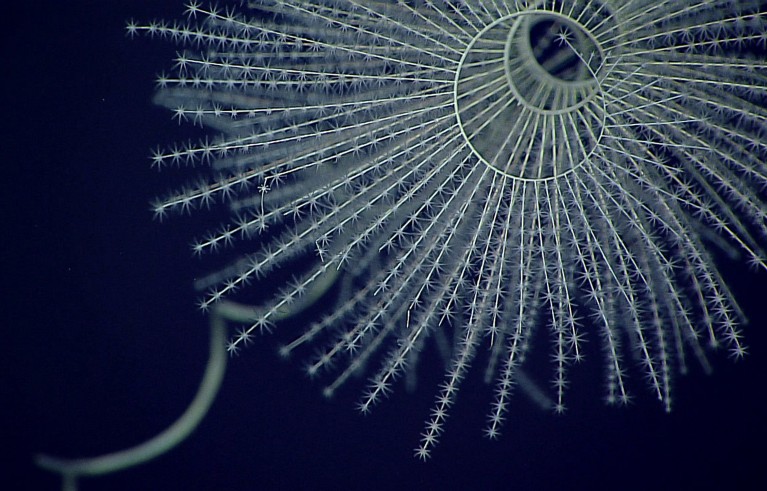[ad_1]

A bioluminescent octocoral, Iridogorgia magnispiralis.Credit: NOAA Office of Ocean Exploration and Research, Deepwater Wonders of Wake
Some 540 million years ago, an ancient group of corals developed the ability to make its own light1.
Scientists have previously found that bioluminescence is an ancient trait — with one group of tiny crustaceans first making their own light an estimated 267 million years ago. But this new finding pushes back the origins of bioluminescence even further by around 270 million years.
“We had no idea it was going to be this old,” says Danielle DeLeo, an evolutionary marine biologist at Florida International University in Miami, who led the study, which was published on 24 April in Proceedings of the Royal Society B. “The fact that this trait has been retained for hundreds of millions of years really tells us that it is conferring some type of fitness advantage.”
Bioluminescence has evolved independently at least 100 times in animals and other organisms. Some glowing species, such as fireflies, use their light to communicate in the darkness. Other animals, including anglerfish, use it as a lure to attract prey, or to scare away predators.
However, it’s not always clear why bioluminescence evolved. Take octocorals. These soft-bodied organisms are found in both shallow water and the deep ocean, and produce an enzyme called luciferase to break down a chemical to make light. But whether glowing octocorals use their light to attract zooplankton as prey or for some other purpose is unclear.
First light
Searching for answers, DeLeo and her colleagues analysed a large data set of genetic sequences and the sparse octocoral fossil record to reconstruct the animals’ evolutionary history. They then used a computer model to determine how likely it was that ancestral species were bioluminescent.
The model revealed that the common ancestor of all octocorals — which lived around 540 million years ago — was probably bioluminescent. The finding suggests that luciferase-based biofluorescence evolved early and was lost by non-bioluminescent descendants of ancient glowing octocorals.
The study shows that bioluminescence has been around since at least the Cambrian period (around 540 million to 485 million years ago), when the first animal species developed eyes. That’s surprising, says evolutionary biologist Todd Oakley, at the University of California, Santa Barbara, because bioluminescence is a trait that “tends to blink on and off” across evolutionary time.
Luciferase is just one way animals make light. Other organisms use different chemistry to get their telltale glow. In the case of octocorals, the luciferase system could have evolved for the production of an antioxidant, says DeLeo. Later, the light-generating aspect of the reaction would have become useful for communication.
In any case, the deep origin of bioluminescence suggests that it could be one of the oldest forms of communication on Earth, she says. “If you’re producing light — whether or not it’s intentional — you are signalling other animals,” she says. “Like, ‘Hey! I’m over here!”
[ad_2]
Source Article Link

